Can you Guess the Age of the Great Blue Heron?
Read the descriptions of each age class of Great Blue Heron growth, then based on what you learned, identify the age of the herons pictured below.
During the first few weeks after leaving the nest, Great Blue Herons are called fledglings. This year’s March Point fledglings were first observed on June 30th. If you are driving around Padilla Bay this month, take your binoculars! When you see Great Blue Herons foraging in the eelgrass beds, take a look and see if you recognize the fledglings.
Great Blue Heron fledglings leave the nest at about two months of age. They are as big as their parents, so size will not help you identify them, but their coloring and feathers will. The fledglings are overall tinged brownish, and their feathers have a looser appearance than the adults. Their crowns are slate grey and lack the white crown stripe of the adults, but if you are really lucky you will see remnants of white down feathers, on their crowns.
After just a few weeks the whitish down is no longer visible. Fledglings are then called juveniles for the remainder of their first year of life. Juveniles have a slate grey crown with no white stripe. They also have rusty brown coloring on their backs and along the edge of their covert feathers that cover the wing feathers. They do not have long body plumes nor do they have dark shoulder patches like adults do. From afar, even when using binoculars, it is difficult to tell the difference between fledglings and juveniles, but both are easily distinguishable from adults. They are identified as the herons with no long body plumes, no white crown, and no shoulder patches.
Between 12 and 24 months of age, Great Blue Herons are called yearlings. Start looking for yearlings early next summer foraging on the mud flats of Padilla Bay. Their crown is still grey, but they have a small, incomplete white crown stripe and short body plumes. Some of their coverts are still edged with a faded rusty brown. Additionally, they have a small shoulder patch.
Adult Great Blue Herons have a black crown with a white stripe down the middle. Their face is mostly white. Their wings, back, and neck are a slate grey, and their undersides are whitish. Adults also have a distinctive black shoulder patch. From afar, the white stripe on their black crown, and the very dark shoulder patch tell you they are adults. Look for adult Great Blue Herons in winter, walking slowly and then standing very still as they hunt voles in the fields.
Great Blue Herons begin breeding at 2 to 3 years of age. Great Blue Herons grow long plumes on their breast and back during courtship. Also, their bills turn a bright orange. Look for this courtship plumage and bright orange bills at March Point during February. They are commonly spotted standing on the railroad tracks by the casino.
Take a look at the photos below and see if you can guess the herons’ ages. Are they Hatchlings, Fledglings, Juveniles, Yearlings, or Adults?
| 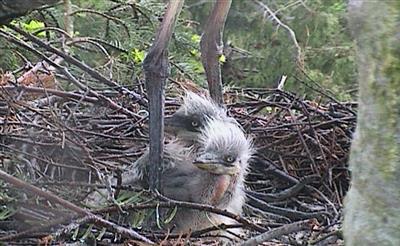 Heron A. Photo by: Levy Scheltens Heron A. Photo by: Levy Scheltens
| |
| 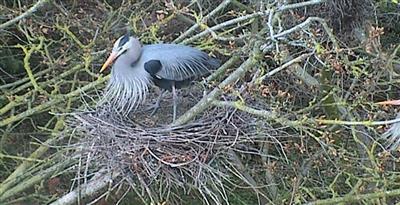
Heron B. Photo by: Levy Scheltens
| |
| 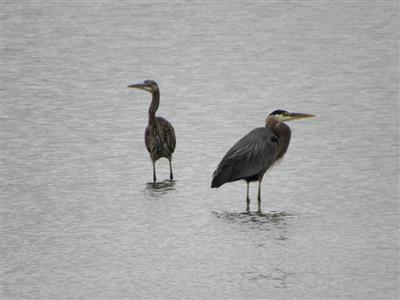 Heron C & Heron D Photo by: Sue Ehler Heron C & Heron D Photo by: Sue Ehler
| |
| 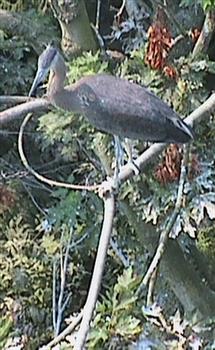
Heron E. Photo by: Levy Scheltens
| |
| 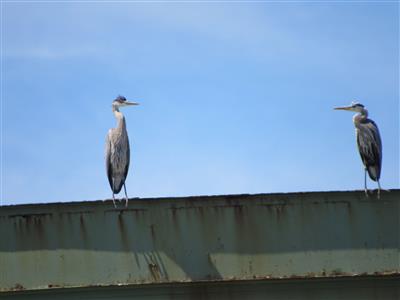
Heron F & Heron G. Photo by: Shirley Hoh
| |
Click here to see the answers!